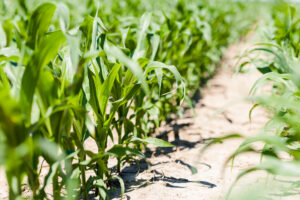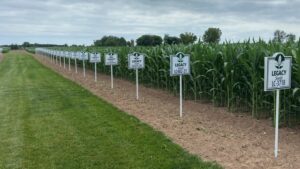Why Growing Corn as Forage Benefits Livestock & Beyond
March 19, 2024
Because of the demand for corn grain in the U.S., many farmers overlook its potential as a forage crop, especially if they don’t have livestock. But regardless of whether a farmer has cattle or not, growing corn for forage offers many benefits — to the herd, to the soil, and to a farmer’s pocketbook.
Benefits of Raising Corn for Forage
For starters, growing corn silage is nearly identical to growing corn grain. The only big difference is being prepared to harvest it earlier, when the crop is still green and roughly at 70% moisture.
For livestock farmers, it provides a high-energy, high-quality feed. Starch is a huge energy requirement, and corn silage is packed with it. When growers use a hybrid like Ration Choice, they’re getting a high fiber level as well.
“The fact that you can grow 25 to 30 tons per acre of very high-value forage for your farm and harvest that in one event is fantastic,” says Judd Hodgen, Legacy Seeds Forage and Crop Specialist.
It also affords cattle farmers the opportunity to grow even more forage. After corn silage harvest, you can apply manure then plant another high-quality forage crop like triticale, harvest it the following spring, and then plant corn again.
“You’re upping your total tonnage for inventory management, and they’re both high-quality forages, if you harvest them at the right time,” Judd says. “You also have a living root virtually 11 months of the year.”

Even if you don’t have livestock, there are still benefits to raising forage if you can work with a local livestock owner. Many livestock farmers likely have too much manure for their own fields, so crop farmers can contract with them and get a manure application in exchange for a good price on silage.
“One of the fringe benefits of that is you can get winter wheat planted behind that manure or a cover crop, and get a living root in that soil for the rest of the season to hang onto that manure,” Judd says.
Growing corn for forage can also be beneficial for minimum- or no-till farmers who are struggling with residue management. Unlike grain corn, only a 12- to 16-inch stalk is left after harvest, making it much easier to plant back into the following year.
Choose Corn Bred for Forage
It’s not enough to plant your typical corn hybrid and harvest it earlier. Why? Because those hybrids have been optimized for just one part of the plant: the grain.
That’s why we developed Ration Choice, so livestock farmers can grow a hybrid that’s been optimized for the whole corn plant to meet the needs of their herd.

That starts with yield and ensuring farmers can grow enough corn for their livestock. Next is the nutritional makeup, which includes fiber digestibility, starch content, starch digestibility, and residual sugars.
Meeting all of those parameters results in a nice, efficient ration for the cow, and therefore a higher-quality milk.
“Our butterfat has been going through the roof,” Judd says. “Farmers get paid on energy-corrected milk. So we’re seeing the components in that milk go up, and it’s adding dollars in their bank account.”
Every corn hybrid labeled Ration Choice has been designed and tested, not only at our Research Learning Center, but in labs and university trials throughout multiple states, to meet those important parameters. We also work with every farm to ensure they select the right Ration Choice hybrid that will match their nutritional goals.
“We have to place it on the right farm on the right field,” Judd says, “but if it’s labeled Ration Choice, farmers should have all the confidence in the world that it’s going to make good feed for their animals.”

